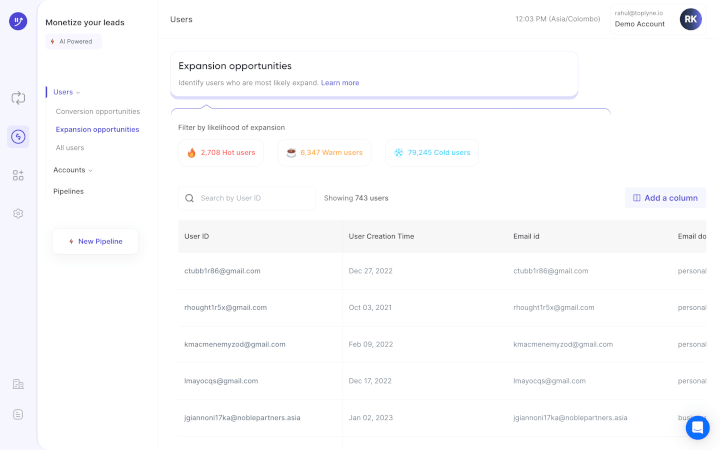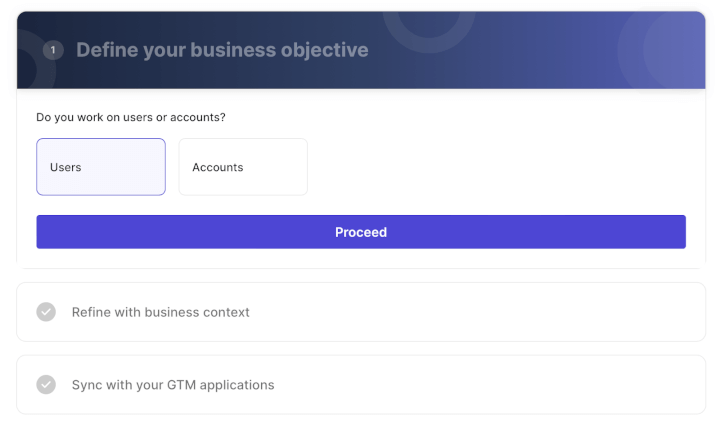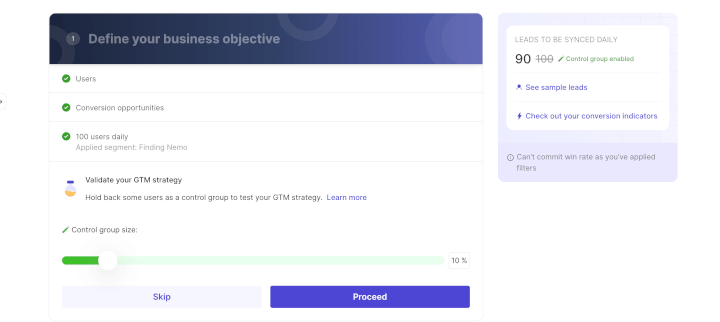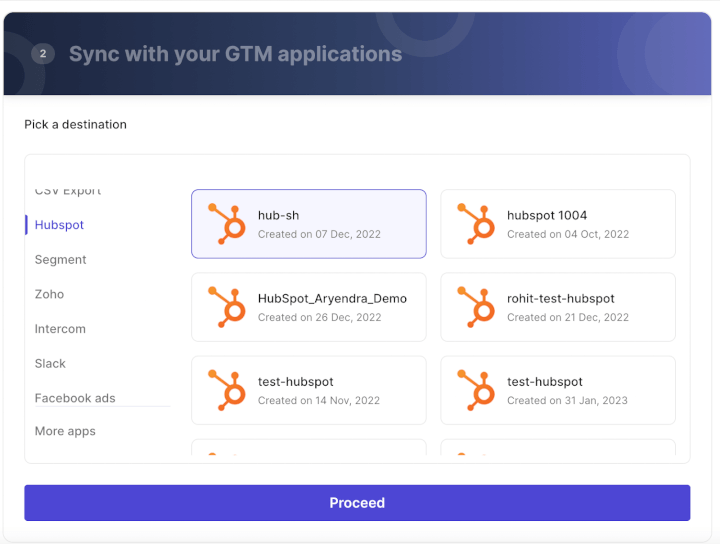The Most Comprehensive Guide To Understanding A Buyer Journey

Understanding the buyer’s journey has long since proven to be instrumental in helping sales reps target better leads and offer the best solutions for potential customers.
Not only does a comprehensive layout of a potential customer’s step-by-step path to purchase allow sales managers to align their sales process with the buyer’s journey, but it also provides the unique opportunity to fulfill the customer’s needs at every stage.
To better understand how this works, let’s first examine what the buyer’s journey entails.

What is a Buyer Journey?
The buyer’s journey captures and anticipates a potential customer’s interaction with your company and product before its purchase.
In the B2B world where inbound marketing drives the purchase decision, the customer’s journey can be visually mapped out:
- Starting from where and how the customer first developed an awareness of your product, and
- Includes every subsequent contact with your marketing and sales platforms that informed their path to purchase
Why is it Important?
Mapping the buyer’s journey is important specifically because it helps
- Understand customer-specific pain points and needs to better target their attention,
- Examine the choices potential buyers have made to identify what makes them move along the path to purchase,
- Know when and where customers require a slight nudge to be sales-ready, and
- Know when customers are seriously sales-ready.
With this, sales reps can learn to better empathize with buyers, better position their products, and push forward relevant content for their target audience. Let’s take a closer look at how this happens.
Three Crucial Stages of the Buyer’s Journey
Every buyer has three stages they must go through as part of the buyer’s journey. They are:
- Awareness Stage
The awareness stage begins when the potential buyer first becomes aware of a business problem or pain point that needs resolving.

This propels them to conduct research through various means such as speaking to their colleagues, online browsing, attending trade shows or other industry events, or looking through marketing material. They feel the need to know more about their specific problem.
- Consideration Stage
Once the potential buyer has identified and understood their pain points, they will need to look for potential solutions to effectively deal with it. Thus, the consideration stage begins, and the buyer gathers information about several products including their features, pricing, and customer support options.
This is the stage where buyers might actively engage with sales reps, read case studies, as well as draw comparisons between available solutions to determine which option is best suited to their needs.
- Decision Stage
The decision stage begins when the potential buyer has identified the product or service that solves their problem and is sales-ready.
This final stage marks when buyers compile a list of products on the market and narrow it down to the one that best aligns with their needs. Buyers may engage in negotiating the price of the product, or contract terms with the vendor, and finalize the purchase depending on the outcome. Thus, the buyer’s journey comes to a fruitful end.
Automation tools can help streamline this mapping of the customer’s lifecycle and greatly reduce the time and resources spent on the same. Keep reading for a detailed analysis of how you can tailor your sales process to the buyer’s journey.
How to Align Your Sales Process with the Buyer’s Journey
- Create Your Buyer Persona
A buyer persona is a representative portrait of a company’s ideal customer. Research and data about existing and potential customers can be used to create a vivid semi-fictional persona that takes into account their:
- Motivations and goals
- Identity and demographics thus include information like the typical buyer’s age, gender, location, profession, income, and desires.
The more detailed your buyer persona is, the better you can effectively position your product or service. Make sure to employ the following best practices for the appropriate results:
- Study your current customers by asking the right questions. Knowing which customers benefit the most from what you have to offer can help you identify potential customers with ease and specificity.
- Categorize your ideal customers into different segments to create different personas that classify them according to common patterns in terms of goals, location, age, and profession.
- Organize your detailed and diverse data neatly to better conceptualize your buyer personas’ motivations, needs, and wants.

Creating a buyer persona is imperative to understanding your customer and subsequently knowing where to focus your marketing.
- Create Content for Every Stage
The different stages outlined earlier provide a firm skeletal framework for the way content can be created and marketed.
- In the awareness stage, since the buyer has developed a radar for their problem, it is advisable to provide them with educational content to direct them toward the desired solution. To this end, blog posts, social media content, how-to guides, listicles, and e-books can be useful resources to familiarize them with the nature of their problem.
- In the consideration stage, the buyers are looking for the best solution to their problem. Thus, case studies and product comparisons can be deployed to inform customers of all the options available to them.
- Finally, in the decision stage, buyers evaluate providers for specific or specialized offerings. The priority for sales reps now is to stand out against competitors and establish the product’s credibility. You can incentivize the customer to purchase your product or service by offering free trials and live demos, setting up FAQs and product landing pages, and highlighting positive customer reviews.

Thus, you can assist your potential buyer every step of the way and improve your chances of closing the sale.
- Identify Barriers to Purchase
This involves tackling the factors that prevent customers from taking the final step and purchasing your product. Identifying barriers can also help your business develop awareness regarding possible changes that can be made to
- The product itself,
- Your marketing campaign, and
- Sales strategy
… to help customers overcome these barriers.
For instance, the lack of brand awareness as a barrier can be overcome by altering your selling strategy and running email nurturing campaigns to educate potential users. Collecting and sharing reviews and star ratings from past customers via relevant review sites such as G2 and Capterra, among others, can help establish your brand’s credibility.

On the other hand, if high pricing is the primary barrier, then offering extended free trials or extending time-sensitive discount codes in-platform nudges that push the customer to make a quicker purchase.
Poor customer experience can also act as a barrier to purchase. In such cases, you can focus on streamlining your website so that it is more user-friendly, keeping the purchasing process hassle-free and quick.
Thus, by adjusting your approach to your buyer’s experience with barriers, you can position your product and craft its messaging more effectively.
- Keep Learning and Evolving
It is very important to continually evolve marketing and sales tactics to see what works best for you. If offering suitable marketing and sales content fails to produce the desired results, consider adding powerful CTAs (calls-to-action) to help prospective buyers along in their journey.
Remember touchpoints to enable a purchase decision like displaying testimonials, conducting informative webinars, sending over case studies, and incorporating educational content according to the buyer’s journey stages for the most effective lead generation.

- Target High-intent Users from the Decision Stage
A high-intent user is someone that knows what they wish to purchase and intends to purchase it. This data can be gathered from the varied buyer personas that you have come up with, and segmentation strategies can be used to target this section of your consumer base. Targeting a high-intent user gives you a higher chance of success because they are already at the decision stage.
Targeting product-qualified leads, that is, someone who has already used your product either via a free trial or access to a demo version and experienced its value firsthand, can also be targeted again effectively.
How?
With Toplyne!
Toplyne is a one-of-a-kind headless sales tool that helps create a sleek pipeline of product-qualified leads. It helps increase win rates, identify conversion opportunities, and boost net revenue retention (NRR).
The tool uses artificial intelligence to identify behavioral patterns of any lead via in-product activity. This means your team gets access to the product usage data and only has to reach out to quality leads who are most likely to convert in your sales pipeline.
Thus, your PQL (product-qualified leads)-saturated pipeline effectively boosts your sales conversion rate under a time crunch.
Here’s how companies like Canva and Vercel generate sales pipeline from their self-serve funnel using Toplyne:
- Step 1/7: Create monetization playbooks to surface conversion and expansion opportunities (leads most likely to convert to paying customers, and teams most likely to grow into larger teams)

- Step 2/7: Choose the right leads to target – users (individual users) or accounts (a group of users with an organization).

- Step 3/7: Select the frequency at which you would want leads synced in your GTM apps.

- Step 4/7: Define how many leads you want by either the number of leads or your expected win rate, depending on your sales capacity and GTM strategy.

- Step 5/7: Build custom segments - Build custom segments based on And/Or logic at the deepest level of sub-properties within your product analytics.

- Step 6/7: Validate your GTM strategy - Hold back some users as a control group to test your GTM strategy.

- Step 7/7: Sync your product qualified pipeline into your GTM destinations - CRMs, sales & marketing execution tools, and customer engagement platforms.

Conclusion
In a highly digital and fast-moving economic landscape where the buyer is more informed than ever before, it is crucial to streamline your inbound marketing strategies. Understanding the B2B buyer’s journey and matching your content marketing to the stage of the buyer is a very important step towards achieving this.
Keep in mind that knowing your target audience and the buying process goes a long way to putting together a successful sales team, and you will seamlessly transition your business and buyer to the next stage.


.svg)









.png)